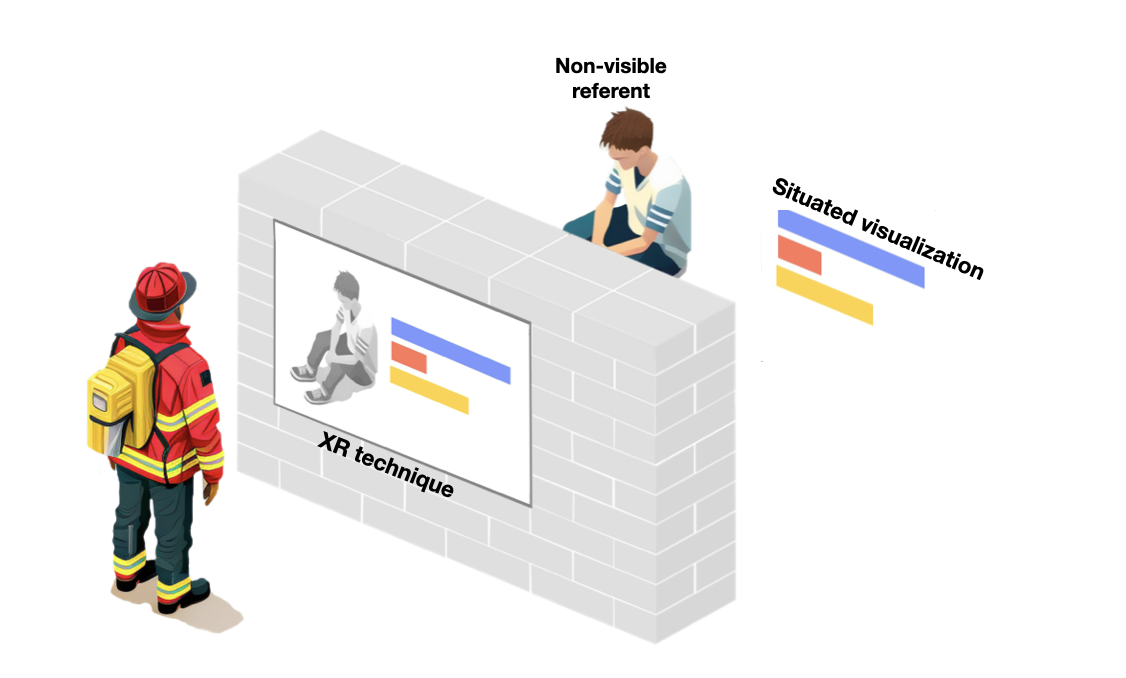Handling Non-Visible Referents in Situated Visualizations
Ambre Assor, Arnaud Prouzeau, Martin Hachet, Pierre Dragicevic
DOI: 10.1109/TVCG.2023.3327361
Room: 109
2023-10-26T05:21:00ZGMT-0600Change your timezone on the schedule page
2023-10-26T05:21:00Z

Fast forward
Full Video
Keywords
Taxonomy, Models, Frameworks, Theory ; Mobile, AR/VR/Immersive, Specialized Input/Display Hardware
Abstract
Situated visualizations are a type of visualization where data is presented next to its physical referent (i.e., the physical object, space, or person it refers to), often using augmented-reality displays. While situated visualizations can be benefcial in various contexts and have received research attention, they are typically designed with the assumption that the physical referent is visible. However, in practice, a physical referent may be obscured by another object, such as a wall, or may be outside the user’s visual feld. In this paper, we propose a conceptual framework and a design space to help researchers and user interface designers handle non-visible referents in situated visualizations. We frst provide an overview of techniques proposed in the past for dealing with non-visible objects in the areas of 3D user interfaces, 3D visualization, and mixed reality. From this overview, we derive a design space that applies to situated visualizations and employ it to examine various trade-offs, challenges, and opportunities for future research in this area.